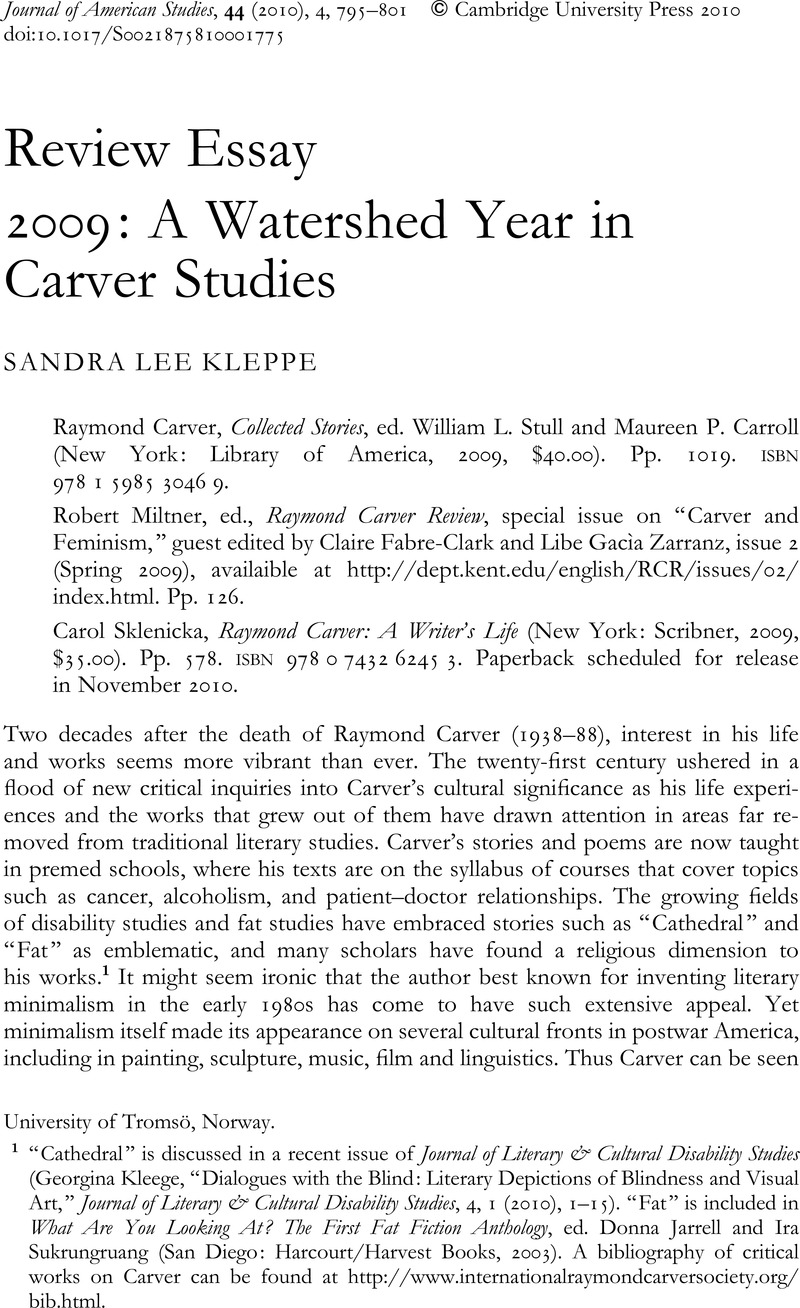No CrossRef data available.
Article contents
2009: A Watershed Year in Carver Studies
Published online by Cambridge University Press: 05 January 2011
Abstract

- Type
- Review Essay
- Information
- Copyright
- Copyright © Cambridge University Press 2010
References
1 “Cathedral” is discussed in a recent issue of Journal of Literary & Cultural Disability Studies (Kleege, Georgina, “Dialogues with the Blind: Literary Depictions of Blindness and Visual Art,” Journal of Literary & Cultural Disability Studies, 4, 1 (2010), 1–15CrossRefGoogle Scholar). “Fat” is included in What Are You Looking At? The First Fat Fiction Anthology, ed. Donna Jarrell and Ira Sukrungruang (San Diego: Harcourt/Harvest Books, 2003). A bibliography of critical works on Carver can be found at http://www.internationalraymondcarversociety.org/bib.html.
2 Charles E. May employs the “m-word” as a moniker for minimalism in his Introduction to Cynthia Hallett's Minimalism and the Short Story: Raymond Carver, Amy Hempel and Mary Robison (Lampeter: The Edwin Mellen Press, 1999), ix. One of the more recent treatments of Gordon Lish's editing as a scandal appeared in the New Yorker, 24–31 Dec. 2007, 92–107, revealing details of Lish's influence and suggesting that Carver did not agree with his cuts. A recent defense of Lish can be found in Giles Harvey's “The Two Raymond Carvers,” New York Review of Books, 27 May 2010, 38–40.
3 Randolph Runyon, Reading Raymond Carver (Syracuse: Syracuse University Press, 1988), 4.
4 Enrico Monti mentions these editorial collaborations in his substantial analysis of Carver's manuscripts in “Il Miglio Fabbro? On Gordon Lish's Editing of Raymond Carver's What We Talk About When We Talk About Love,” Raymond Carver Review, 1 (2008), 53–74Google Scholar; James Campbell discusses “the good and bad sides of restoration” of several American texts in “What a Carve-up,” Saturday Guardian, 1 Dec. 2007, 21.
5 Interview with Michael Schumacher in 1987, reprinted in Conversations with Raymond Carver, ed. Marshall Bruce Gentry and William L. Stull (Jackson, MS and London: University Press of Mississippi, 1990), 230.
6 Quoted from an email sent on 7 Aug. 2007, from Chuck Kinder to ircs@internationalraymondcarversociety.org.




